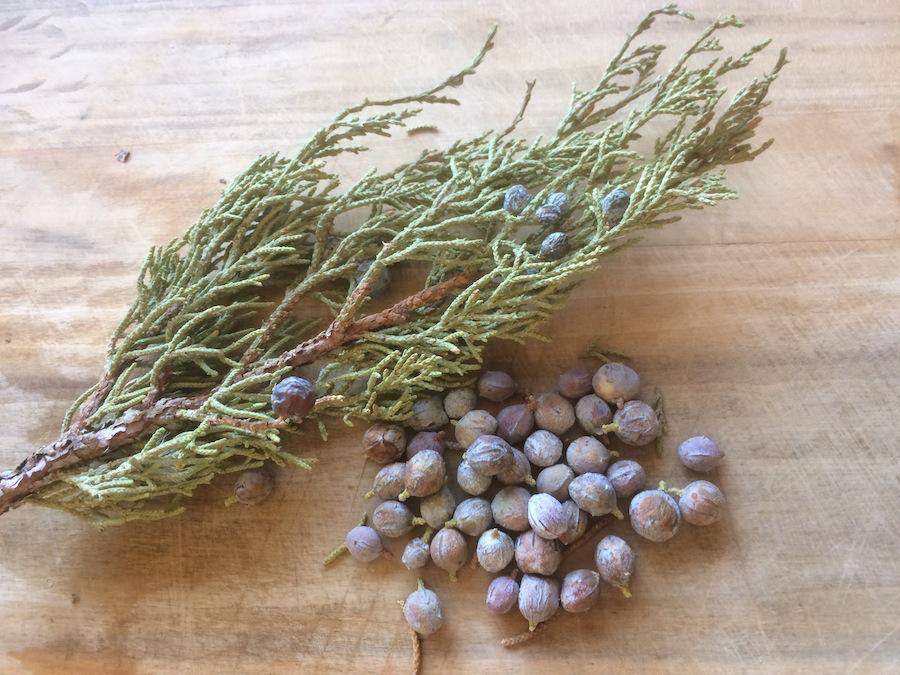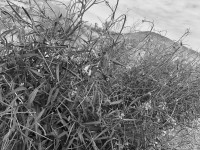Evergreens

DECEMBER INGREDIENT: EVERGREENS
As the earth tilts away from the sun and daylight disappears, the cold seeps in and cycles of growth in the natural world begin to slow. Flowers and fruit are scarcely seen, except for maybe the withering, de-saturated tops of once-golden rabbit brush stands, or the last clinging acorns that haven’t been swept from their branches by disturbing gales. Clumps of bare, gnarled twigs cling to the earth, nursing their stored resources that will ensure their real estate titles until spring arrives.
Winter is a time of reduced consumption and production, and each plant species has their own method of coping. The shedding of nutrient-greedy leaves is the most obvious action, and many desert plants drop their green parts immediately after completing their spring reproductive cycle, well before winter arrives (sometimes in summer when lingering moisture is effectively wicked by the relentless sun). But a great deal do not, and will maintain their foliage throughout the year. These plants—the evergreens—have adapted to the scarce conditions of the desert, tolerating poor soil nutrition and limited water intake. This month we’ll be opening up the ingredient window to feature this entire group as a way of keeping in stride with the seasons, and to think respectfully about natural patterns of plant vitality. Evergreens include most of the pines and firs, but also several plants that aren’t needle producing: junipers, live oak, holly, and culinary herbs like sage and thyme. From tea infused with Christmas tree needles to a turkey rubbed in rosemary landscaped in a strip mall parking lot, the list of evergreen applications is ever-long.
—Sarah Witt
For more information on HDTK, as well as more helpful tips on acorn’s many uses, check out Sarah’s website.
Monday, December 18th at 7pm
Copper Mountain Mesa Community Center
65336 Winters Rd. Joshua Tree, CA
High Desert Test Kitchen (HDTK) is an informal monthly dinner gathering organized by artist Sarah Witt. Participants bring a dish to share that is either made with or inspired by ingredients inhabiting this peculiar span of the North American desert. Exploring the Mojave from a culinary perspective, HDTK naturally intersects with foraging practices and Native American traditions, and inevitably ignites debates concerning ethical human-to-wilderness relationships - hopefully challenging our taste buds too.
From September 2016 to July 2018 Sarah Witt organized High Desert Test Kitchen (HDTK), a monthly dinner gathering at the Copper Mountain Mesa Community Center in North Joshua Tree. Each month a different ingredient was featured with the challenge of incorporating local desert roots, fruits, insects, or a handful of twigs into a culinary repertoire. Participants would bring a dish to share, gathering together to discuss where the ingredients were sourced, the manner in which they were processed, and to consider their EQ (or edibility quotient). To read more about these native ingredients visit Sarah’s website.


















